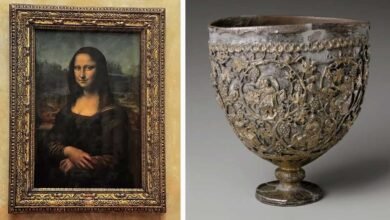
In the ever-evolving narrative of human history, we often encounter practices that challenge our understanding of cultural norms and personal identity. One such practice, shrouded in mystery and spanning across time and geography, is artificial cranial modification. The act of deliberately altering the shape of the human skull may seem bizarre to the uninitiated, but a closer examination reveals a rich tapestry of meanings, traditions, and societal dynamics.

Deliberate modification of the skull, also called the “Toulouse deformity.” (Photo: Didier Descouens/WikiCommons CC BY-SA 3.0)
The year was 2013 when archaeologists working in Alsace, France unearthed a tomb that defied expectations. Enclosed within was the skull of an aristocratic woman who had lived around 1,600 years ago. Her skull was a testament to artificial cranial deformation—a practice involving the deliberate shaping of the head’s natural form through external forces. With the front flattened and the rear rising into a cone shape, her skull bore witness to a tradition that spans centuries and continents.
This practice, far from being an isolated incident, has traversed the boundaries of time and geography. The French peasantry practiced a form of cranial deformation known as the Toulouse deformity until the early 1900s. In Russia, the Caucasus, and Scandinavia, echoes of this practice persisted. From the Shanidar Cave in Iraqi Kurdistan, dating back more than ten thousand years, to the proto-Neolithic period, humanity’s fascination with reshaping the head endures.

(Photo: Didier Descouens/WikiCommons CC SA 3.0)
The motivations behind cranial deformation are diverse and multifaceted. Societies have used this practice to distinguish social groups, signify high rank, and indicate class status. In Europe, tribes such as the Huns, Sarmatians, Avars, and Alans popularized the practice, leaving their mark on the historical tapestry. The journey of these tribes from the Caucasus region of Central Asia to Western and Central Europe brought with it the tradition of head binding.
Surprisingly, scientific research has debunked misconceptions surrounding cranial modification. Contrary to early European observers’ assumptions, the practice does not impact cognitive function or cranial capacity. Experts have found “no evidence of negative effect on the societies that have practiced even very severe forms of intentional cranial deformation.”
The origins of artificial cranial deformation trace back to ancient civilizations across the Americas, including the Mayans and Inca. In North America, the Choctaw and Chinookan tribes engaged in the practice as well. The reasons behind this practice were diverse: fitting into societal norms, signifying class, and even holding religious significance, as seen in Mayan culture.
The narrative of cranial deformation stretches beyond ancient history. In remote outposts of the world, such as Polynesia and the Congo, the tradition endures, albeit rarely. In Vanuatu, the head shape is associated with revered folk heroes and religious beliefs.

Paracas skulls on display at Museo Regional de Ica in the city of Ica in Peru (Photo: Martin Tlustochowicz/Wiki Commons CC BY 2.0)
Through the centuries, humanity’s fascination with reshaping the human skull has transcended time, geography, and cultural boundaries. The woman discovered in Alsace is not an anomaly; rather, she is a testament to the enduring beauty in the eye of the beholder. The legacy of artificial cranial modification is a testament to the human desire to shape not only the physical form but also the intricate cultural identities that define us.

(Photo: Wellcome Images, London)
Image Credit: Wikimedia Commons (Public Domain)
source : https://www.atlasobscura.com/articles/head-space-artificial-cranial-deformation





